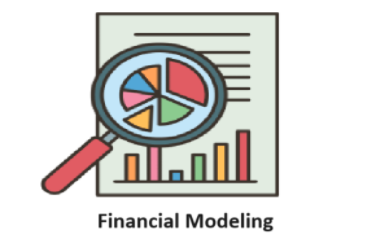Fin modeling, or financial modeling is used to forecast future financial performance based on historical data and various assumptions about future conditions. Economic models are essential tools for decision-making and financial planning in businesses and the finance industry.
It requires proficiency in financial theory, accounting, and tools such as Microsoft Excel or specialized financial modeling software. It is widely used by financial analysts, investment bankers, corporate finance professionals, and other stakeholders to inform strategic decisions and financial planning. Let us expand our knowledge of fin modeling with some real-life examples.
Essential Elements of Financial Modeling
The essential elements of financial modeling are critical to understanding its purpose and functionality. Fin modeling is a powerful tool that combines quantitative analysis with strategic insights, enabling businesses and investors to make informed financial decisions and plan for the future effectively.
Key Takeaways
- Financial Modeling is the process of making a summary of various expenses of the company and earnings which can be used to make smart, informed decisions.
- It combines accounting, finance, and business metrics to make smart investment decisions, manage risks, secure funding, and develop long-term growth strategies.
- Investment banks, private equities, commercial banks, and real estate companies are some organizations actively using fin modeling.

Some of the essential elements of financial modeling include:
- Budgeting and Planning: Budgeting and planning refers to the creation of detailed financial plans and budgets that outline expected revenues, expenses, and capital needs, which helps in setting financial goals and monitoring performance against those goals.
- Forecasting: Forecasting refers to the prediction of future financial performance based on historical data and assumptions about future conditions, which includes projecting revenue, expenses, profits, cash flows, and other financial metrics.
- Valuation: Valuation refers to the estimation of the value of a business, project, or investment using techniques including Discounted Cash Flow (DCF) analysis, Comparable Company Analysis (CCA), and other financial metrics.
- Risk Analysis: Risk Analysis refers to the evaluation of potential risks and their impact on financial performance which includes sensitivity analysis, scenario analysis, and stress testing to understand how different variables affect outcomes.
- Decision Making: Decision-making supports strategic decisions by providing detailed financial insights and projections. Financial models help in evaluating options such as capital investments, mergers and acquisitions, financing choices, and operational changes.
- Integration of Financial Statements: This is one of the most important elements of fin modeling, which refers to the combination of income statements, balance sheets, and cash flow statements into a cohesive model that ensures that changes in one statement are accurately reflected in the other.
- Accuracy and Consistency: This is one of the major elements of financial modeling, which refers to maintaining accuracy in calculations and consistency in the application of methodologies. This helps in building reliable models that stakeholders can trust.
Real-life Example of Financial Modeling
The following real-life example demonstrates how financial modeling can be a crucial tool for strategic decision-making, providing a comprehensive analysis of potential financial outcomes and guiding businesses toward informed, data-driven choices.
Let us consider a mid-sized consumer electronics company, TechSolutions. The company decides to launch a new line of smart home devices in the market. Now, the company employed fin modeling to evaluate the feasibility and potential profitability of this venture.
The main goal is to create a financial model that would project the revenue, costs, and profitability of the new product line over the next five years. The steps of financial modeling involve market research and assumptions, revenue projections, cost estimations, integration of financial statements, scenario analysis, and risk analysis.
- The company started by conducting market research to estimate the demand for smart home devices. They analyzed industry reports, competitor performance, and consumer trends. According to this research, they assumed an initial market penetration rate and annual growth rate. They also projected sales volumes based on the average selling price.
- The model projected sales volumes based on market penetration rates and expected market growth. Revenue was calculated by multiplying the projected sales volumes by the average selling price.
- TechSolutions estimated the variable costs, including all costs that are directly tied to the production of each unit. The costs that are fixed, such as research and development, marketing, and administrative expenses, were also factored into the model.
- The financial model integrated the projected revenues and costs into pro forma income statements, balance sheets, income statements, and cash flow statements. This integration ensures that the model accurately reflects changes in sales volumes.
- Sensitive analysis was performed to identify which variables had the most significant impact on profitability. This analysis helped in understanding the potential risks and preparing mitigation strategies.
The financial model revealed that the new product line had the potential to be highly profitable, with a positive net present value (NPV) and an internal rate of return (IRR) exceeding the company’s hurdle rate. However, it also highlighted potential risks, such as high initial marketing costs and dependency on technological advancements.
Based on the insights from the financial model, TechSolutions decided to proceed with the launch, implementing a phased rollout strategy to manage risks and investing in marketing to ensure strong market penetration.
What Type of Businesses use Financial Modeling
Financial modeling is used by a variety of businesses across different sectors for strategic planning, decision-making, and performance analysis. Fin modeling is a versatile tool used by a wide range of businesses to support strategic decisions, manage risks, and drive growth. It also helps companies understand their financial performance, plan for the future, and make informed decisions.
Some of the key types of businesses that frequently use financial modeling are:
- Investment Banks: Fin modeling is utilized by investment banks as it is crucial for mergers and acquisitions, initial public offerings, and other corporate finance activities. They use models to value companies, assess deal feasibility, and determine optimal financing structures.
- Private Equity and Venture Capital Firms: These companies or businesses use financial modeling to evaluate potential investments, estimate returns, and determine exit strategies. The models help the company assess the financial health and growth potential of target companies.
- Corporate Finance Departments: Fin modeling is utilized by these companies for budgeting, forecasting, and strategic planning. The financial models support decisions related to capital allocation, project evaluation, and risk management.
- Commercial Banks: Financial modeling is used by commercial banks for credit risk assessment, loan valuation, and stress testing. Banks model the financial health of borrowers to make informed lending decisions.
- Real Estate Companies: Real estate firms use financial models to evaluate property investments, forecast cash flows, and assess project viability. Models help in determining property values, rental yields, and return on investment (ROI).
Types of Financial Modeling
The table below provides a concise overview of each type of financial model, its main characteristics, and its typical applications in various financial analyses and business decisions.
|
Types of Fin Modeling |
||
| Type | Description | Common Uses |
| Three-Statement Model | Integrates the income statement, balance sheet, and cash flow statement. | Comprehensive financial analysis and forecasting. |
| Discounted Cash Flow (DCF) Model | Values investment based on expected future cash flows. | Valuation for M&A, investment analysis, and capital budgeting. |
| M&A Model | Evaluate the financial impact of mergers or acquisitions. | Analyzing synergies, and deal financing. |
| Leveraged Buyout (LBO) Model | Assesses the feasibility and returns of leveraged buyouts. | Evaluating private equity buyout opportunities. |
| Comparable Company Analysis | Values a company by comparing it to industry peers. | Relative valuation for investments. |
| Precedent Transactions Analysis | Values are based on prices of past similar transactions. | Benchmarking in M&A. |
| Budgeting and Forecasting Model | Projects’ future performance is based on historical data. | Budget creation, financial forecasts. |
| Option Pricing Model | Values financial derivatives like options. | Pricing options in finance and trading. |
| Consolidation Model | Combines financials of multiple units into one. | Overall financial view for multinational corporations. |
| IPO Model | Assesses financial viability for going public. | IPO valuation and strategy. |
| Project Finance Model | Evaluate the financial feasibility of specific projects. | Infrastructure and energy project analysis. |
| Real Estate Financial Model | Evaluate real estate investments. | Cash flow projections, property valuation. |
| Sensitivity Analysis Model | Tests outcome sensitivity to key assumption changes. | Risk assessment. |
| Scenario Analysis Model | Evaluate the impact of different scenarios. | Strategic planning, risk management. |
Learn Financial Modeling with PW Skills
Master financial modeling and analysis with PW Skills Financial Mastery Analysis & Modeling Course. Learn to prepare and analyze financial statements, three statement models, the DCF Model and Evaluation, project finance models, and more. Become a certified financial model expert and make informative decisions on behalf of companies for assured success.
Fin Modeling FAQs
Q1. What is Financial Modeling?
Ans: Financial Modeling is the process of creating a mathematical representation of the financial situation or performance of a business, project, or any other investment.
Q2. Why is financial modeling important for businesses?
Ans: Financial modeling helps make smart investment decisions, manage risks, secure funding, and develop long-term growth strategies.
Q3. Is financial modeling in demand?
Ans: As most businesses nowadays depend on data-driven decision-making, the need for effective financial modeling is increasing and professionals skilled in financial modeling can discover vast opportunities in this field.

